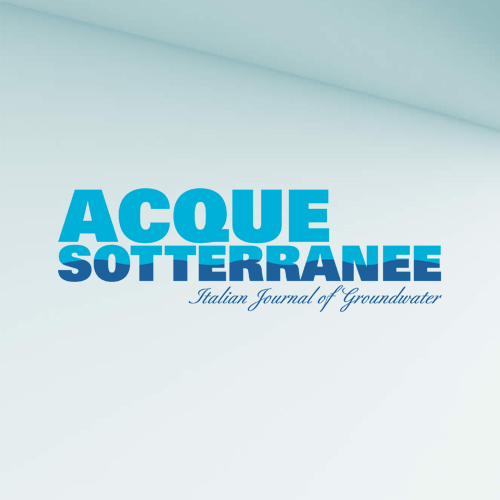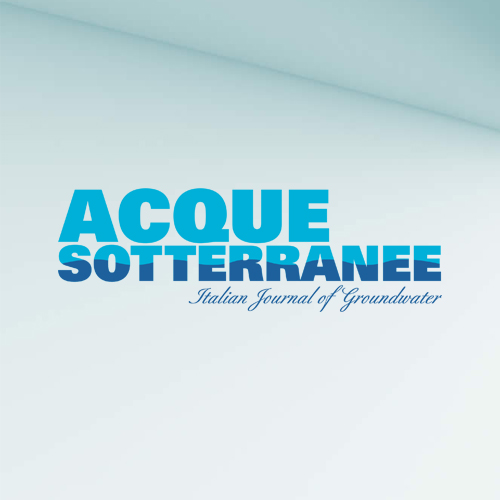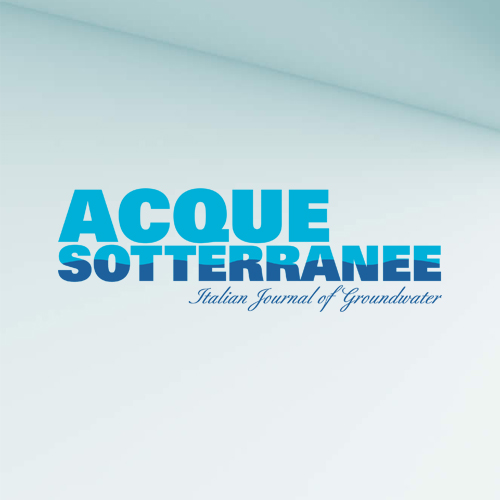Spatio-temporal variability of groundwater hydrochemical features in different hydrogeological settings in Piedmont and Campania regions (Italy), a comparative study
Accepted: 19 March 2024
SUPPLEMENTARY MATERIALS: 106
All claims expressed in this article are solely those of the authors and do not necessarily represent those of their affiliated organizations, or those of the publisher, the editors and the reviewers. Any product that may be evaluated in this article or claim that may be made by its manufacturer is not guaranteed or endorsed by the publisher.
Authors
The spatio-temporal evolution of groundwater chemistry has seen an increase in interest over the last decade at a global level. Identifying and discerning the sources of the natural and anthropogenic compounds and the actual hydrochemical processes, as well as their evolution, is essential to support a sustainable planning for managing and protecting groundwater resources at the present time and in the future. The main objective of this study is the comparison of two study areas in Italy (Piedmont and Campania Regions), different in their geographical and geological contexts and climate conditions, to highlight the similarities and differences in the hydrogeochemical behavior in space and time. Three main ions were considered (NO3 –, SO4 2–, Na+) and analyzed to identify the sources and hydrochemical processes responsible for their spatial distribution in the 2015-2020 period and evaluate the existence and the potential causes of trends in their concentration for the 2000-2020 period. Results highlight specific factors and processes distinguishing the spatial distribution and temporal variability of ion concentrations in Piedmont and Campania study areas. These processes are mainly related to the geological and geographical features of the study areas. In both areas, a significant influence of anthropogenic pressures emerges for both spatial and temporal evolutions, with remarkably increasing trends in NO3 – concentrations. In conclusion, some factors and processes emerge as site-specific, mainly related to the geological aspects and natural hydrochemical processes, whereas others are in common (i.e., anthropogenic impacts); thus, reinforcing the advantage of making comparative studies.
How to Cite

This work is licensed under a Creative Commons Attribution-NonCommercial 4.0 International License.
PAGEPress has chosen to apply the Creative Commons Attribution NonCommercial 4.0 International License (CC BY-NC 4.0) to all manuscripts to be published.
Similar Articles
- Joseph Guttman, Pumping and injection of surplus desalinated seawater as part of the new management of the groundwater resources in Israel , Acque Sotterranee - Italian Journal of Groundwater: Vol. 9 No. 3 (2020)
- Azzurra Lentini, Giovanni De Caterini , Ennio Cima, Rino Manni, Giancarlo Della Ventura , Resilience to climate change: adaptation strategies for the water supply system of Formia and Gaeta (Province of Latina, Central Italy) , Acque Sotterranee - Italian Journal of Groundwater: Vol. 10 No. 4 (2021)
- Antonio Dematteis, Riccardo Torri, Bertrand Chereau, Michel Ducrot, Groundwater in the Perthus Tunnel: feedback after excavation , Acque Sotterranee - Italian Journal of Groundwater: Vol. 10 No. 2 (2021)
- Enrique Fernandez Escalante, Jose David Henao Casas, Ana Marìa Vidal Medeiros, Jon San Sebastiàn Sauto, Regulations and guidelines on water quality requirements for Managed Aquifer Recharge. International comparison , Acque Sotterranee - Italian Journal of Groundwater: Vol. 9 No. 2 (2020)
- Elena Alexandrovna Kuz'mina, Anna Vladimirovna Novopashina, Groundwater outflows and fault density spatial relation in the Baikal rift system (Russia) , Acque Sotterranee - Italian Journal of Groundwater: Vol. 7 No. 1 (2018)
- Giuseppe Sappa, Francesco Maria De Filippi, Quali-quantitative considerations on low-flow well purging and sampling , Acque Sotterranee - Italian Journal of Groundwater: Vol. 10 No. 3 (2021)
- A. Blasi, M. Menichetti, Thermal conductivity distributed from a Thermal Response Test (TRT) in a borehole heat exchanger (BHE) , Acque Sotterranee - Italian Journal of Groundwater: Vol. 1 No. 3 (2012)
- Manuel Sapiano, Flowpath 2023 Conference , Acque Sotterranee - Italian Journal of Groundwater: Vol. 13 No. 1 (2024)
- Francesco La Vigna, GDE - Groundwater Dependent Ecosystems (Gli ecosistemi dipendenti dalle Acque Sotterranee) , Acque Sotterranee - Italian Journal of Groundwater: Vol. 4 No. 2 (2015)
- Andrea Viezzoli, Antonio Menghini, A new tool available for hydrogeologists: the Airborne EM method , Acque Sotterranee - Italian Journal of Groundwater: Vol. 3 No. 4 (2014)
<< < 16 17 18 19 20 21 22 23 24 25 > >>
You may also start an advanced similarity search for this article.


 https://doi.org/10.7343/as-2024-748
https://doi.org/10.7343/as-2024-748










